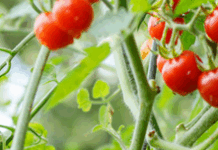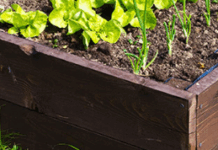Many young, smooth, thin-barked trees such as honey locusts, fruit trees, ashes, oaks, maples, lindens, and willows are susceptible to sunscald and bark cracks. Sunscald normally develops on the south or southwest side of the tree during late winter. Sunny, warm winter days may heat the bark to relatively high temperatures. Research done in Georgia has shown that the southwest side of the trunk of a peach tree can be 40 degrees warmer than shaded bark. This warming action can cause a loss of cold hardiness of the bark tissue resulting in cells becoming active. These cells then become susceptible to lethal freezing when the temperature drops at night. The damaged bark tissue becomes sunken and discolored in late spring. Damaged bark will eventually crack and slough off.
Trees often recover but need TLC — especially watering during dry weather. Applying a light-colored tree wrap from the ground to the start of the first branches can protect recently planted trees. This should be done in October to November and removed the following March. Failure to remove the tree wrap in the spring can prove detrimental to the tree. (Ward Upham)




